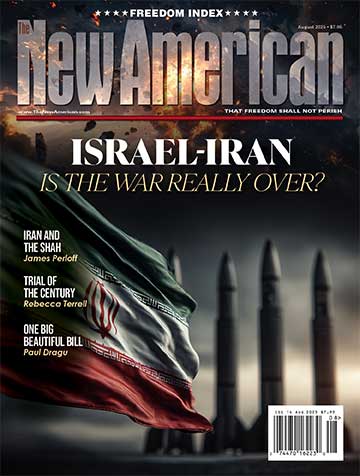
If they destroy your history, they destroy your identity. If they destroy your identity, then they can give you whichever one they choose. It’s all about having power over you.
Those of the political Right have long understood the importance of preserving, studying and learning from history — just as those of the Left have long understood that their power comes from destroying or rewriting history.
Much focus has often been placed on more recent history — the 17th century and later. It’s not unexpected; after all, every nation likes to believe its own founding was the beginning of history. And America’s story really only gets going in the 1600s, with the first colonists.
But what is easy to lose sight of is the fact that America has a deeper English and, more broadly, European heritage that goes back millennia. Knowing and understanding European history not only tells us who we are, but allows us to be wise, more-informed citizens in a republic.
The Founders were well-versed in this history and made use of their knowledge in creating this republic, one of the world’s greatest political achievements.
The Founders had a strong familiarity with medieval history. Emulating their knowledge of this field is important for two reasons.
First, while the foundations of the West go back to ancient Greece and Rome, the true birth of the European nations took place in Medieval Europe.
Second, the Middle Ages are brimming with lessons about government, society, economics, religion, and human nature that are immensely relevant to our world today.
Contrary to what many academics have led the general public to believe, the Middle Ages were not the “Dark Ages,” as they are so often called.
Palomo Pucci, an academic involved with the Bibliothèque nationale de France who has two master’s degrees in medieval manuscripts from the Université Paris 1 Panthéon-Sorbonne, writes:
The idea of a dark intermediary period between the Roman Empire and the Renaissance came from the mid-14th century Italian scholar, Petrarch, who divided history into two periods: the classical period in which Greeks and Romans brightened the world with their intellectual achievements, and a period of darkness and cultural stagnation (in which he himself felt to be living).
… During the Renaissance (the transition from the Middle Ages to modernity covering the 15th and 16th centuries), Petrarch’s idea of a dark and barbaric medieval past fed into humanists’ belief in their own present time as the rebirth of classical culture. This belief had been conditioned by the words of Giorgio Vasari, a 16th-century artist and art historian, who considered that Roman art had been the best and most divine of any other.
Meanwhile, intellectuals during the Enlightenment and the movement’s subsequent proponents perpetuated the idea of the Middle Ages being “dark ages” because it was, in many parts of Europe, an era of monarchies and the dominance of Christianity — whereas Enlightenment thinkers advanced a greater degree of secularism and humanism, as well as the virtues of representative government.
But, as Pucci notes, “the Middle Ages were an era of great inventiveness during which art, architecture, literature, international trade and culture flourished.”
In reality, the Middle Ages were only “dark” if you take a view of the world in which the Roman Empire is front and center. But the world did not fall into chaos and disorder with the Roman Empire’s fall.
For one thing, the eastern Roman Empire, also known as the Byzantine Empire, continued for another millennium after the fall of Rome.
In addition, Rome did not disappear from the face of the earth after the empire fell; on the contrary, it continued to be an important political, economic, and cultural center, particularly as the center of the Roman Catholic Church — one of the most important institutions in medieval Europe.
Also, republicanism did not disappear between Rome and the founding of the United States. There were several republics in the Middle Ages. Powerful city-states like Florence, Genoa, and Venice held elections and had all the political drama of any contemporary republic.
It’s true that the European kingdoms did not have all of Rome’s technology or knowledge at the beginning of the Middle Ages. But that’s not because the world fell into “darkness.” Rather, it’s because these kingdoms were barbarian tribes in Rome’s heyday. At the time the Middle Ages began, they were relatively still getting their civilizations started.
The Left is happy to contribute to the “dark ages” myth because they want to minimize the role of Christianity in making European civilization great. But although woke historians like to depict the Catholic Church as an instrument of oppression, backwardness, and ignorance, the reality is that the Church preserved much of the knowledge and scholarship of Rome. We wouldn’t have it today without the Church.
Furthermore, the Church had a civilizing effect on the early European kingdoms that helped them become the great nations that made Europe the world’s center of innovation and culture in the modern period.
By studying medieval history, conservatives learn about the social importance of biblical faith; the pros and cons of different political systems; and many other important lessons.
There is also much to be learned from the Italian republics, whose intrigues, achievements, triumphs, and failures (including collapses into tyranny, such as Florence’s descent from republic to monarchy) are very informative for those who want to understand the American Republic.
As is often said, those who do not learn from history are doomed to repeat it.





